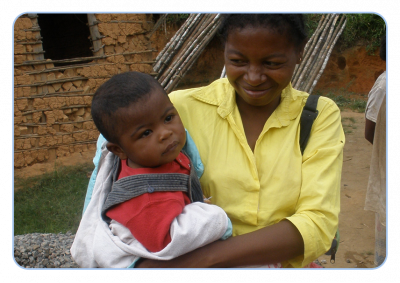What is evidence-driven?
Evidence-driven means using evidence to guide your decision making when and where needed. There are three points during your program design, development, and implementation where evidence is critical:
1. When listing causes stopping achievement of your goal (formative research)
Not understanding the environment in which your program is going to take place reduces your ability to respond to needs. Research on the causes helps you place your program in the broader context. There is a lot of existing research you can use from numerous sources, such as the World Bank, UNICEF, Demographic Health Survey, etc. So, more often, it’s a matter of searching out evidence already there, rather than conducting research to gather new evidence.
2. When determining factors influencing your priority behaviors (formative research)
One of the most important elements of behavioral analysis is having the right data available to make decisions. And the most important aspect of this decision making is to understand, when working to change behaviors, WHY your primary actors behave the way they do. You need to find the factors inhibiting or motivating them to take action. Not find out what they do, such as that many mothers do not visit clinics for care. But why they do it. For example, many mothers do not visit clinics for care because the clinics are too far away, because services cost too much, and because they do not like the way they are treated disrespectfully.
This piece of guiding research often involves new research being conducted with your primary actors and potential supporting actors. But you should always start with any existing research that’s available. No need to reinvent the wheel when you can stand on the shoulders of the SBC giants that went before you.
3. To assess whether you are on track to success (adaptive research)
Adaptive evidence requires ongoing collection. Following the progress of your primary actors is essential:
- How are they doing?
- What are they doing?
- Where are they having difficulties?
- What improvements have they made on their own to how they practice the behaviors?
- What local solutions have they come up with that were not in your plan?
- How have the factors been changing?
Hearing what your primary actors say, and adapting accordingly, means accepting your communities where they are and only then moving them to where you want them to be.
Why is evidence-driven important?
This evidence helps you:
- Make decisions that are based on the context and situation.
- Make sure you understand your communities, their motivations, their lifestyles, and their willingness and ability.
- Understand what is working, what is not and how to make changes.
Ultimately, evidence-driven programming increases the likelihood of bringing about the change you want and achieving your goal. It does that by putting information and knowledge at your fingertips to use as needed.
How does evidence-driven make BIG different?
At each critical research point, BIG has something to offer.
During formative research for listing causes stopping achievement of your goal
BIG has provided you with access to country uptake data on 25 high impact health behaviors by country and by health topic as a starting point in understanding what might be stopping you from achieving your goal.
We also provide a sample health survey for gathering information if you need it.
During formative research in determining factors influencing your priority behaviors
We have simplified this data collection process for you by creating a table that you can use to compile the information you already have available, by priority behavior and by factor. Using this table, you can see what you presently know and what gaps you have in understanding the context, primary actors, and the needed “whys”.
You can use this list of gaps to design a targeted research questionnaire and protocol. Then select the best research methods to gather the needed data. [We also share a sample completed Research Table with additional instructions.]
BIG also provides access to effective SBC, SBCC, and behavioral science methodologies such as:
These tried-and-true methods can help you get at the whys and give an immediate voice to your primary actors.
During adaptive research to assess whether you are on track to success
Think | BIG has provided specific tools to help you determine what you should be tracking and how to track it, plus dashboards that help you follow trends and make ongoing decisions. These tools keep your focus on behaviors and help you not get lost in the intervention weeds.
Using the BIG process, you most effectively use all the needed guiding evidence at the right critical points in your program.
 BIG CONCEPT:
BIG CONCEPT: 

 The Manoff Group was acquired by JSI in 2022.
The Manoff Group was acquired by JSI in 2022.